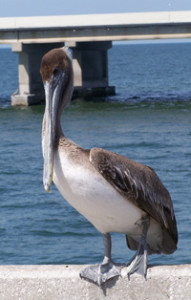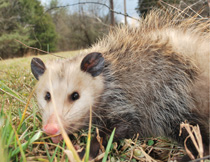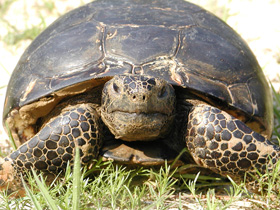
When most people hear SPCA, they probably think puppies – not pelicans and possums.
But that perception could change in Pinellas County where the SPCA Tampa Bay is spearheading an effort to coordinate wildlife rescue organizations across the county.
“A little more than a year ago we set some key initiatives for Pinellas County and one of them was wildlife,” said Nora Hawkins, managing director for guest services and promotions. “People may not realize it but the SPCA has always been involved with wildlife.”
Transporting an injured animal can be a critical issue in a county that stretches nearly 50 miles north and south. “We’re already running a 24/7 emergency ambulance service, so it made sense to do more for wildlife,” Hawkins said. “There aren’t enough resources to care for all the injured wildlife, so we all need to know what services are available and to make sure that we’re not overlapping.”
The SPCA convened a Wildlife Summit that meets monthly, bringing representatives from local Audubon Societies, licensed rehabbers and other interested community groups together to discuss the issues they all face. A survey online at https://www.surveymonkey.com/s/PinellasWildlife is designed to identify services available in the county and bring other organizations into the group.
While the SPCA won’t be able to house injured wildlife, it picked up over 1,000 injured native animals last year, including pelicans, possums, blue jays and squirrels. Some were humanely euthanized but others were rehabilitated and released.

Availability of space at local rehab facilities is a critical issue in Pinellas County, particularly since Suncoast Seabird Sanctuary closed last year. Robin Vergara and Barb Suto, former SSS employees, are working with Pinellas County to identify a 5- to 10-acre site where the recently formed Gulf Coast Bird Rescue can build a hospital and rehab facilities.
“We have a private donor willing to buy the land, and six or seven realtors looking, but it’s been harder than we expected to find a site,” said Vergara, now executive director of GCBR. “We’re working with the county to see what they have available – the best scenario would be for them to provide the land in a long-term agreement and we can use that money toward flight pens and a hospital.”
For now, severely injured birds are taken across the state to facilities in Apopka and Maitland, but it’s an expensive trip that’s also stressful for the bird, he said. Luckily, most injured birds in Pinellas County are entangled in monofilament or other fishing tackle and they can generally be treated closer to home.
One of those licensed rehabbers is Rick Levy, who works for the SPCA driving its ambulance and investigating animal abuse during the day. His state and federal licenses allow him to work with all birds except bald eagles in his backyard aviary. “I’m usually up and cleaning cages about 4:30 a.m. and I’ll be out here until 9:30 in the evening.”
While it makes a long day, Levy said he had to do something to help sick and injured animals. “There’s such a big need and so few people doing it,” he said.
Orphaned bird?
Maybe not!
This time of year, wildlife experts get many calls about “orphaned” birds found on the ground without their parents nearby. In some cases, they really have been injured and need assistance, but they’re often just fledgling birds learning to fly. “Sometimes they fall first and then learn to fly from the ground,” said rehabber Rick Levy. “Watch them before you rush in to rescue them.”
If you’re sure it’s an injured bird, call the SPCA’s emergency service at 727-423-0773. Cover the bird with an empty laundry hamper so it doesn’t get away before the ambulance gets there.
FWC enlists citizen-scientists to track gopher tortoises

A new app from the Florida Fish and Wildlife Conservation Commission helps citizen-scientists document where gopher tortoises live. Just take a photo of a gopher tortoise or its burrow within the app, and it will automatically send the picture, along with the GPS coordinates of where you are located, to the FWC. As data is collected, FWC will develop an interactive map so web visitors can zoom in to see where the tortoises live in their neighborhoods.
The app also contains gopher tortoise information and a fun quiz to test your knowledge, learn more about this protected native Florida species, and help protect and conserve gopher tortoises.
Get the app at http://myfwc.com/wildlifehabitats/managed/gopher-tortoise/app/